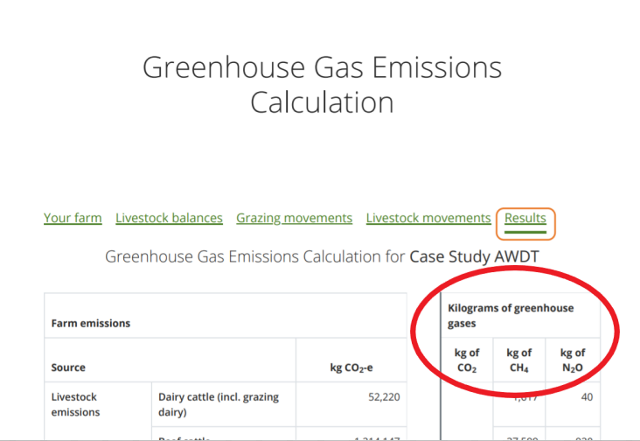The GWP* metric has, rightly, been getting a lot of attention lately and we’ve been asked about the use of metrics in B+LNZ’s GHG Calculator – and what that means for our wider advocacy.

Since it was launched in July, the free GHG Calculator has proven to be a useful tool to get farmers on the journey to ‘know their numbers’ – around 2000 farmers used it in the first three months after launch.
Upon completing the tool, farmers are armed with numbers that give them a good base of information and enable them to understand how the wider conversation may reflect on their system.
The results page of the GHG Calculator shows results in kilograms of carbon dioxide equivalents. We’ve been asked how that lines up with our advocacy for the GWP* metric.
When you calculate your emissions using the GHG Calculator, the right hand side of the results page (see below) shows each gas’s volume with no metrics or conversion. This is consistent with, and to support, B+LNZ’s long-standing position of a split gas approach.

The GHG Calculator also presents (on the left side of the page) results in the commonly used metric of GWP100 (CO2-e). Converting results to a common baseline means farmers can more easily join the wider conversation about numbers, as these conversations generally use this metric.
It doesn’t mean B+LNZ endorses the use of the GWP100 metric for short-lived gases, or the current reductions targets, but we want our levy payers to be able to relate these wider conversations back to their own context.
So why doesn’t the GHG Calculator use GWP*?
B+LNZ strongly supports the use of GWP* at a national level and has been calling on the Government to review the methane reduction targets in the Zero Carbon Act using GWP* and to start reporting on the warming impact of various gases. There’s a snapshot of our advocacy here.
However, GWP* isn’t practical or necessary at a farm level, in part because it requires around 20 years of historical data in order to work properly – otherwise it’s erratic.
Additionally, any increase in methane emissions has an exponential outcome in terms of warming with GWP*. At a national level, sheep and beef numbers have decreased but for individual farms stock numbers or overall feed consumption may have increased, so GWP* would actually not be helpful for these farmers if used at the farm level.
Separately, we’ll keep advocating for the use of GWP* to report national emissions and the annual warming contribution of agriculture overall, and to determine the methane reduction targets. We will also monitor future developments in whether GWP* could be applied beyond the national level.